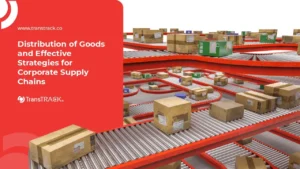Release Order: An Important Document in Container Shipping
Posted on January 24, 2024 by Nur Wachda Mihmidati

In the world of logistics, there are various terms and procedures that ensure the smooth distribution of goods. One term that may sound unfamiliar but has a crucial role is the release order. Release order is a term that often appears in various shipping and receiving processes. However, not everyone knows what a release order actually is and its function in the logistics system.
Let’s understand further what a release order is and why this term is very important in every process of shipping and receiving goods, especially in containers. TransTRACK has summarized information about this procedure starting from the definition, function, to the format of the contents. Let’s take a closer look at what a release order is through the following article.
What is a Release Order?
So, what exactly is a release order? A release order is a document issued by the buyer of goods to the seller to authorize the delivery of the ordered goods. In other words, this document serves as an official permission for the supplier or vendor to release the goods from storage and send them to the destination address.
This document is usually issued by the procurement department of the buying company once they are ready to receive the shipment from the supplier. Without a valid document, the vendor is not authorized to send any products to the buyer, even if the order has been made and approved beforehand.
Release Order Functions
Release orders have several key functions in the world of logistics, which aim to ensure that goods reach their destination safely and efficiently. Here are some of the key functions of this document:
Timing and Delivery Plan
The main function of this document is to set specific delivery dates and times. By setting clear time parameters, this document helps in planning and managing the flow of goods, avoiding possible delays that could affect the entire supply chain.
Goods Monitoring and Coordination
This document acts as a detailed guide to the goods to be shipped, including quantities and special specifications. This makes it easy to monitor and coordinate the goods throughout the journey, ensuring each item reaches its destination without a hitch.
Ensuring Goods Availability
This document includes information about the quantity and type of goods to be delivered. This helps those involved in logistics to ensure the availability of the necessary goods to fulfill customer demand.
Proper Arrangement and Storage
Release orders help in the proper arrangement of goods and storage in the warehouse. Detailed information about goods facilitates efficient placement, reducing the risk of loss or damage during the storage process.
Preparation of Payment Details
In this document, there are payment terms that must be considered by the parties involved. This function helps create a clear framework for financial transactions related to delivery, avoiding uncertainty or conflict.
Components of a Release Order
A release order is a written document that details every aspect of a shipment, ensuring that all parties involved have a clear understanding of what should be shipped, where, and when. Let’s talk in detail about what a release order typically contains.
Item Details
The most fundamental component in this document is the details of the goods to be shipped. This includes the type of goods, their quantity, and if required, additional specifications. The details create a basis for all parties involved to ensure that the delivered goods match expectations.
Shipping Address
The destination address is another key element. This document lists the address clearly and completely so that the goods can reach the correct location. Accuracy in this address is very important to avoid shipping errors that can be detrimental.
Delivery Date and Time
Setting specific delivery dates and times is another integral component. It helps in overall logistics planning, ensuring timeliness of delivery according to customer requirements.
Payment Terms
This document also includes payment terms that must be observed. This involves information related to payment methods, maturity, and any financial related matters that need to be followed by the relevant parties.
Related Party Information
In addition, this document also includes information on related parties, including the sender, receiver, and other parties involved in the shipping process. This helps in clarifying responsibilities and coordination between parties.
For businesses in the logistics industry, an in-depth understanding of what a release order is and how to manage it is key to success. The ability to read, interpret, and optimize processes based on this document can yield significant benefits.
Along with the development of technology, the process of creating and managing release orders has undergone a transformation. One innovative solution that is widely used today is the Truck Appointment System (TMS). This system utilizes technology to coordinate and manage truck delivery appointments more efficiently.
Truck Appointment System not only optimizes delivery time but also helps in reducing queues and waiting time at storage facilities. The system enables logistics companies to plan deliveries better and provides greater visibility into the entire logistics process.
By adopting this technology, logistics companies can optimize their operations, improve delivery reliability, and minimize costs associated with delays or stock shortages. Release orders become more effective when supported by a digital system that facilitates direct monitoring and management. Those of you who are interested in adopting this TMS technology can directly contact TransTRACK. To understand more about this technology, you can apply for a free demo. Let’s have a consultation right now!
Recent Post
Topic :
Recommended Articles

 Bahasa Indonesia
Bahasa Indonesia








